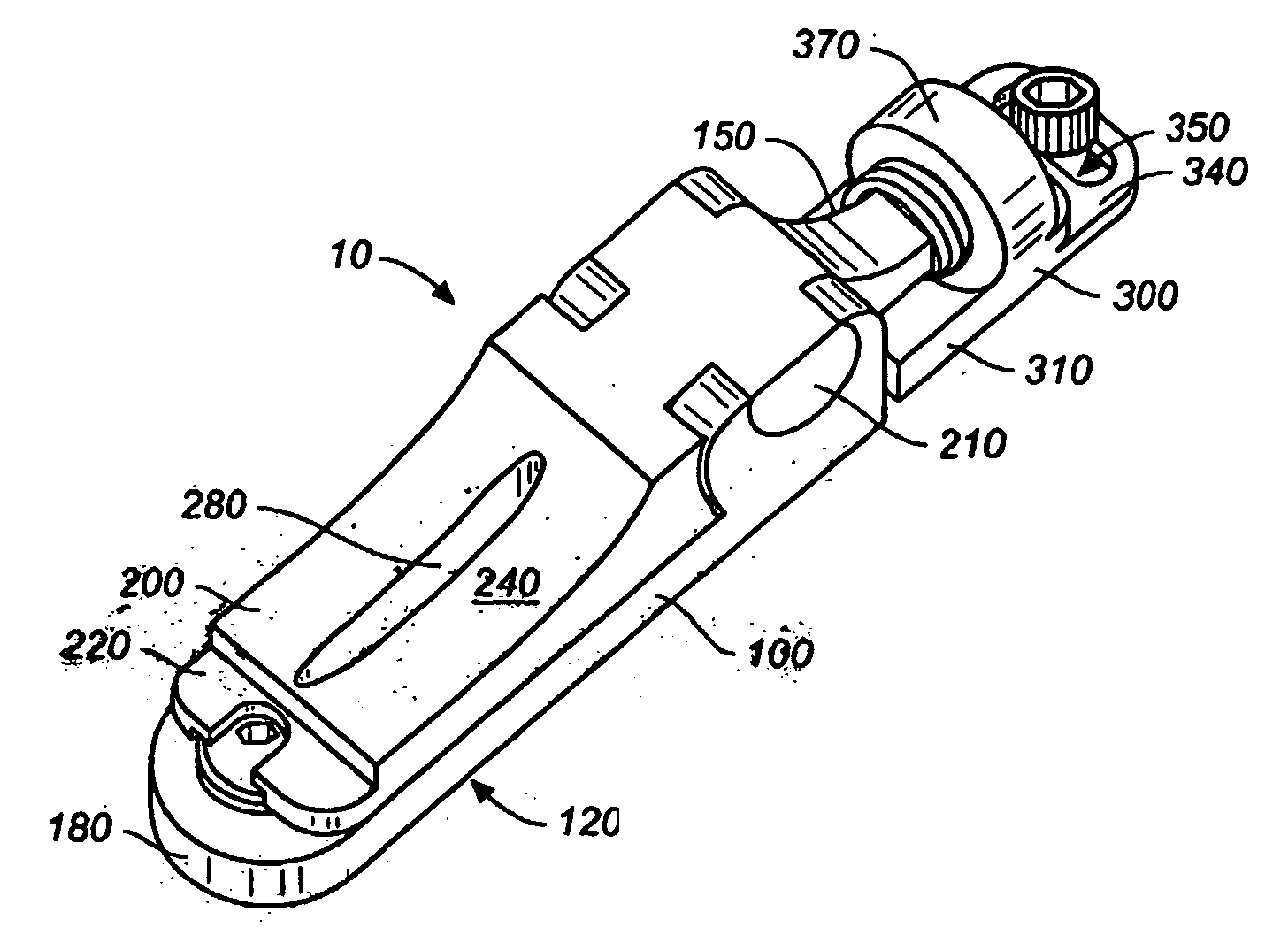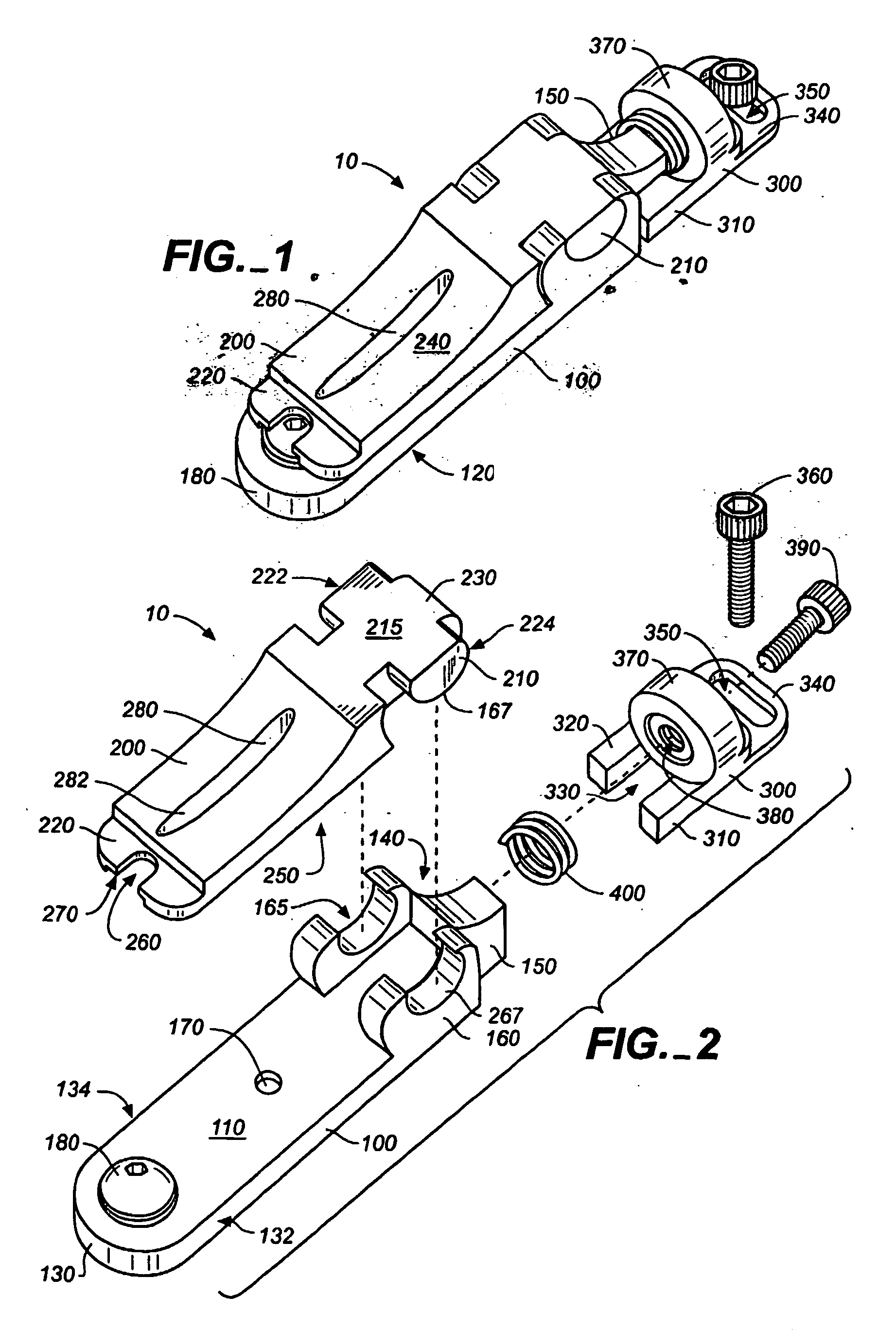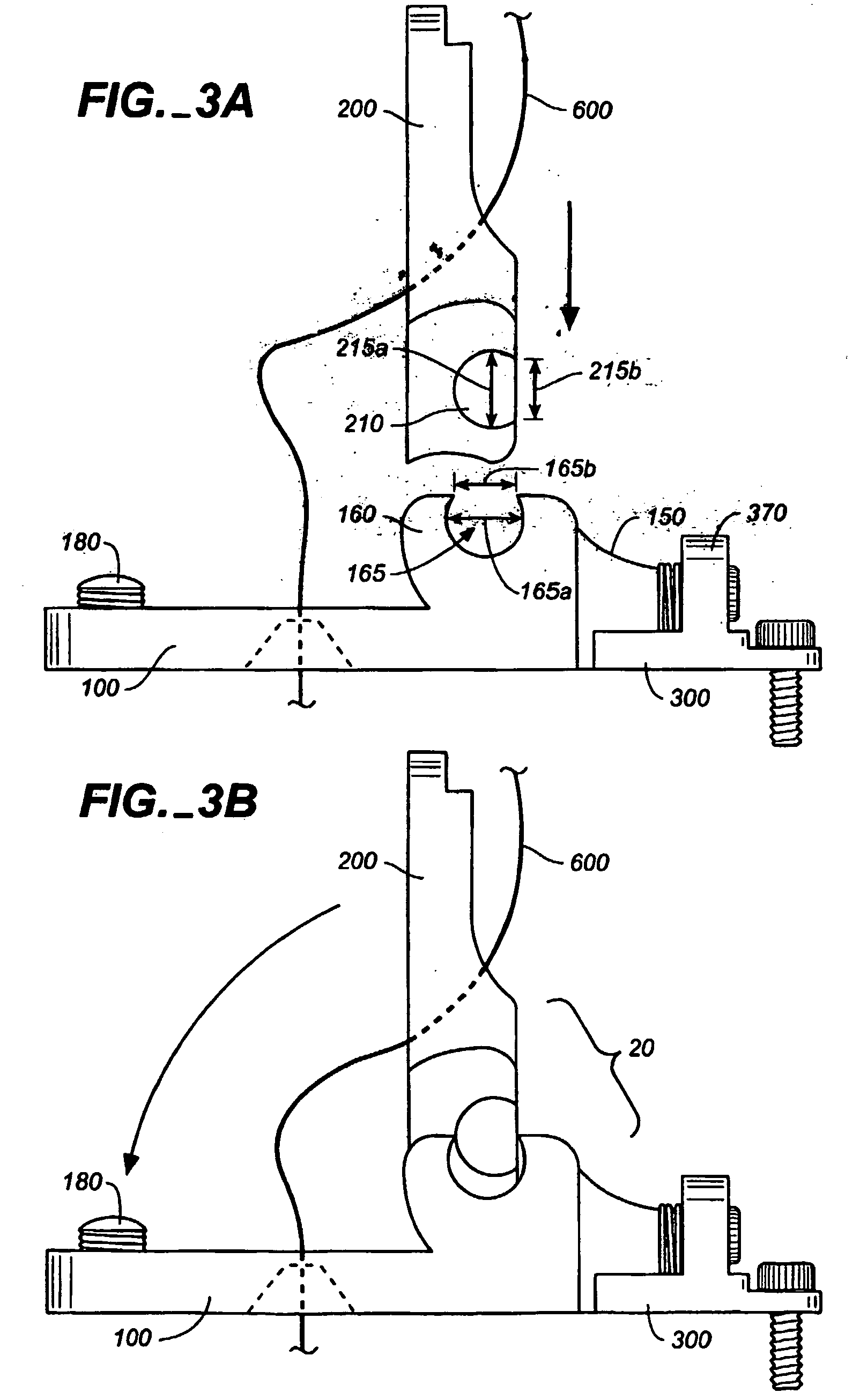Adjustable bridge system for a stringed instrument
a bridge system and stringed instrument technology, applied in stringed instruments, musical instruments, guitars, etc., can solve the problems of reducing the reliability and longevity reducing the reliability of the adjustable bridge system, and reducing the flow of energy between the vibrating string and the instrument. , to achieve the effect of improving reliability and longevity, avoiding the rattle of free moving parts, and simplifying the function
- Summary
- Abstract
- Description
- Claims
- Application Information
AI Technical Summary
Benefits of technology
Problems solved by technology
Method used
Image
Examples
Embodiment Construction
[0112] Referring to FIGS. 1 through 12, wherein like reference numerals refer to like components in the various views, FIGS. 1 through 8 show the bridge element comprising the basis for a bridge assembly of the present invention. These views collectively show that the adjustable bridge system of the present invention comprises a plurality of adjustable bridge elements, each bridge element generally denominated 10 herein. In its most essential aspect, the bridge element of the inventive bridge system of the present invention comprises three primary components, including a structural base 100, a saddle 200, and a control anchor 300. The structural base includes a top side 110 (preferably substantially planar), a generally planar bottom side 120, a front end 130, a right side 132, a left side 134, a rear end 140, a rear end extension 150, and a structural base bracket 160. The structural base further includes a throughhole 170 extending from the bottom side through the top side and ada...
PUM
 Login to View More
Login to View More Abstract
Description
Claims
Application Information
 Login to View More
Login to View More - R&D
- Intellectual Property
- Life Sciences
- Materials
- Tech Scout
- Unparalleled Data Quality
- Higher Quality Content
- 60% Fewer Hallucinations
Browse by: Latest US Patents, China's latest patents, Technical Efficacy Thesaurus, Application Domain, Technology Topic, Popular Technical Reports.
© 2025 PatSnap. All rights reserved.Legal|Privacy policy|Modern Slavery Act Transparency Statement|Sitemap|About US| Contact US: help@patsnap.com



